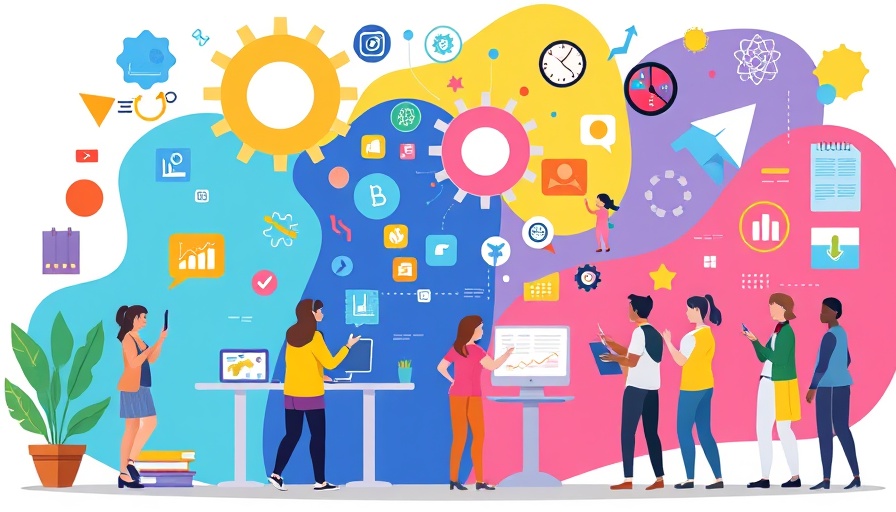
The Rise of AI in Education: Opportunities and Challenges
As teachers grapple with the integration of artificial intelligence (AI) into curricula, the educational landscape is evolving rapidly. Since the launch of ChatGPT in 2022, the presence of AI tools in classrooms has become more pronounced, leaving educators with the dilemma of whether to embrace this innovation or to resist it. The narrative surrounding AI in education is not just about technology; it’s about the potential for enriching students' learning experiences, as well as navigating the ethical implications of such tools.
Evaluating the Impact of AI on Students’ Learning
One of the primary concerns among educators is the dual-edged nature of AI. While some view AI as a tool that can aid in personalized learning by adjusting resources based on individual student needs, others critique it for potentially eroding critical thinking skills. For instance, many teachers are exploring how AI-driven platforms can assist in creating quizzes tailored to students' reading levels or provide instant feedback, which are invaluable in a diverse classroom setting.
A survey by Pew Research in late 2023 highlighted that a significant percentage of teachers (25%) believe AI presents more harm than benefits. This skepticism is largely rooted in fears that students might rely too heavily on AI for answers, thus undermining the learning process. Balancing the benefits of AI tools with the need to promote independent thought remains a key challenge.
Innovative Teaching Strategies Utilizing AI
Despite the challenges, many educators are finding ingenious ways to integrate AI into their teaching. Teachers like Cody Chamberlain have begun using AI to facilitate discussions that challenge ethical considerations, such as in the case of a classroom scenario involving decisions about survival during a hypothetical zombie apocalypse. In his high school English class, the integration of ChatGPT not only sparked debate among students but also stimulated critical analysis of algorithmic decision-making processes.
By incorporating AI into lessons, teachers can create a more engaging and interactive environment. Educators are encouraged to see AI not as an adversary but as a supplementary tool that can open avenues for inquiry and exploration. As Jeff Johnson, an English teacher, aptly puts it, “This is going to change everything. But we have to decide what that actually means.” Hesitance to embrace this shift could stifle innovation in teaching methodologies.
Future Trends in AI for Educational Settings
Looking ahead, the integration of AI into classrooms will likely continue to expand. It could redefine curriculum design, assessment methods, and personalized instruction. Flair for adapting texts to varied reading levels or designing differentiated instruction can significantly enhance educational outcomes. Furthermore, the development of clear policies surrounding AI usage in schools will be essential in guiding educators toward responsible implementation.
As school districts begin crafting guidelines regarding AI's role in education, teachers must remain informed and equipped to utilize these technologies responsibly. Ethical considerations regarding data privacy, algorithmic bias, and accountability are paramount. Understanding these aspects will significantly influence how AI tools are embraced and integrated into lessons.
Empowering Educators Through Collaboration and Training
Professional development and collaborative learning among teachers is crucial for realizing the full potential of AI in education. Workshops, seminars, and peer-to-peer discussions can help educators stay updated on best practices in AI usage. For example, initiatives where experienced educators share their insights on utilizing AI can foster a community enriched with knowledge and resources that encourages innovative teaching practices.
Teachers can also play a vital role in shaping AI tools by providing feedback based on classroom experiences. Such collaboration between developers and educators can lead to more effective, user-friendly education technology that aligns with the needs of modern classrooms.
Conclusion: The Path Forward
The journey of integrating AI into education is complex, with opportunities paired with significant ethical considerations. As AI tools become increasingly prevalent in educational settings, teachers have a unique opportunity to shape how these technologies are used. By fostering critical inquiry, staying informed, and working collaboratively, educators can ensure that AI serves as a valuable partner in enriching the learning experience for students.
As we consider the future of AI in education, let’s embrace the possibilities while remaining wary of the challenges. Engage with fellow educators in discussions about your experiences and findings. Explore how AI can help you and your students thrive academically.
 Add Row
Add Row  Add
Add 




Write A Comment